Natural style in landscape design In recent years, love and popularity among gardeners, both newcomers and experienced professionals of their business. For this style, it is characterized by the use of simple and all familiar plants that are often found in the wild, which allows you to make a plot more natural and harmonious. Each gardener is trying to find the most interesting and unusual plants that would complement the natural theme. Especially revered in this case are coastal plants growing along water bodies and ponds.
Content |
Such cultures can be attributed to the Kaluzhnitsa flower - a beautiful and gentle plant, which from the very spring he will delight solar golden flowers. If someone cannot imagine how the bow looks like, it is enough to remember the appearance of the nutics - their flowers are very similar.
In this article, consider the features of the Kaluzhnitsa, as well as the characteristics of the most popular species and varieties of this culture. We note the most important nuances and rules of agrotechnics of growing Kaluzhnitsa in their plot.
Features and morphological description of Kaluzhnitsy
Kaluzhnitsa is a perennial herbaceous plant, which refers to the Lutikovy family. Crawling, the loose plant is the inhabitant of wild natural conditions, where the plant of Kaluzhnitsa prefers to grow on swampy sites, along the water bodies, rivers, lakes, and even on the surface of water stroit. Different sources offer completely controversial information on the number of species of this unusual and gentle busta. In some literature, about 40 types of Kaluzhnitsa are indicated, 10 of which grow in Russia. According to other information, this plant is absolutely not numerously and is presented with only dozens of varieties, 7 of which can be found in Russia.
All natural varieties of Kaluzhnitsa prefer to grow on moderate and cold territories. This unusual plant can be found almost on all continents. Major and wet meadows and coastal zones in North America, Indian Peninsula, Japan, China, Mongolia, Europe, Scandinavia, Greenland, Russia, and Even Siberia are considered the most optimal places for the growth of Kaluzhnitsa. There are separate specimens of plants that can grow even in the Arctic.
Its Russian name "Kaluzhnitsa" this plant received from the Straarous word "Kaluja", which in translation denotes the "puddle or swamp". This is most likely, with great love of the bowl of Kaluzhniki growing on wetlands and even on water stroit. The scientific name of Calya occurred from the Greek word "Kalazos", which translated the "Bowl", "Basket", "Vessel". This can be explained by the great similarity of the blooming bowls of the bow with cups or saucers. In Russia, there are a lot of people's native names of Kaluzhnitsa, among which the following are particularly popular: snake grass, frog, cow color, dressing, water snake, chicken blindness, yellow head. Abroad also this flower got at all scientific names: Mad Beth, Bull Lily, Water cradle, Royal Cup. On the territory of England, very often the Kaluzhnitsa is called "Gold Mary", since in the medieval tradition, it is the colors of the Kaluzhnitsa to bring a defective Verine as a gift for the Holiday Easter.
Description of Kaluzhnitsy:
- Kaluzhnitsa is a herbaceous plant that grows in the form of small and loose bushes.
- It is worth noting that in the garden plot, the bow under the trees will feel perfect, however, the abundance of sunlight is important for lush flowering.
- The root market of Kaluzhnitsa has a fairly simple structure. Rhizomes have a lacing shape, roots are collected in a bundle. Root system short. Sometimes on the stems can form roots roots, due to which the plant is spread.
- Stems can be bare, with leaves and very branched. The latter can be with small thickening and reach 2.5 cm. The bow of the bow is predominantly reprehensive, less often - lying.
- In height, the plant of a bow can reach an average of 15-75 cm, which depends primarily on the type and variety of culture.
- Leaves on the stems are located next. For the most part, they are solid, sometimes can be with blades.
- Sheet plate has rounded outlines, in the form of predominantly core, in diameter can reach about 15-30 cm.
- The leaves of the bow of smooth and leathery, and in appearance something resemble the leaves of the pita.
- The size of the leaves differs depending on their location. At the bottom of the stem leaves are larger than on top. In addition, in the underwater part of the stem leaves can be reddish, and in the upper part of the plant - dark green.
- Kaluzhniki flowers are very similar to the flowers of the butter, but have a little large sizes. In diameter, one flower can reach approximately 5-7 cm.
- The color of the bow is predominantly golden yellow, sometimes it can be orange, white or pink.
- Flowers are routine, vintage, the right form. Consist of five or more petals, so there may be a simple and terry colors.
- Buds of colors bloom on long blossoms that grow out of leafy sinuses.
- Depending on the variety, flowers can be solid or collected in small inflorescences.
- The bow of the bow ripens in the long-standing. In one fruit, up to 10 black shiny seeds can be at the same time.
- If the bow is growing in water and the seeds after ripening fall into the water, they begin to swell and become a separate plant. Seeds are quickly losing germination.
- All parts of the Kaluzhnitsy are considered to be poisonous, as the plant juice has a laxative effect.
- After biting buds, all the leaves are starting to dry quickly, so do not land this plant in the central part of the garden composition.
- Kaluzhnitsa has good frost resistance, besides, the plant can take insignificant heat.
Variety of types and varieties of Kaluzhnitsy
To date, gardeners are known about natural and garden species of Kaluzhnitsa, which are in varying degrees are common on different continents. Among them are distinguished by simple forms of flower and a terry, which is very impressive in landscape design. Consider the characteristics of the most common types and varieties of Kaluzhnitsa in Russia.
Marsh marigold
This species is considered to be the most popular and common. In nature, these flowers grow in the meadows, swamps, in the forests in a moderate belt of the northern hemisphere. Bolotnaya Kaluchnya is also often found in garden sites. It is a perennial grassy plant, which in height can reach about 40-45 cm. Grows in the form of a small loose busty. On the stems, the rounded leaves of the light green shade are regularly located. Sheet plate shiny and leathery. The lower leaves are larger, in diameter reach 12 cm. Flowers are small, in diameter can only be 4.5 cm. When reveal, resemble roses. Golden petals color. Blossom continues approximately 3 weeks. It is considered to be a poisonous plant.
Bolotnaya bowls:
- Bolotnaya. Differs in glossy, dark green leaves and large yellow flowers. Compared to other varieties, bloom comes earlier, approximately spring, and the flowers are larger.
- Rooting. Present low herbaceous plants that grow mainly in the northern regions.
- Japanese. Also a short plant, whose leaves have a honest form with a toothed edge.
- Araniaoza. It is a fairly large bush, which is characterized by a large number of colors.
- White-colorful. Bolotnaya bow with white flowers.
- Purple. Kaluzhnitsa with beautiful pinkish-red petals in colors.
- Barthier. Plant with amazing brownish flowers.
In addition to the forms of Kaluzhnitsy, the swampy can be distinguished and a wide variety of varieties of this plant, which have various characteristics and features of the appearance. Consider the most popular varieties.
- Montcastle varieties, multiplex, "captivity". Beautiful and spectacular varieties with golden yellow bright colors and thin blooms, which is not always good. Since under the weight of the fully opened colors, the stems spread over the ground. Flowers terry, large enough, in diameter can reach 5-6 cm.
- Variety "Double Gold". Also quite interesting grade with yellow flowers. Unlike other varieties, petals are more elongated and have a slightly wavy edge.
- Grade of Kaluznitsa Bolotnaya "Semiplena". A distinctive feature of this group of Kaluzhnitsa is a flower that consists of eight yellow petals.
- The grade of Kaluznitsa Bolotnaya "Stagnalis". This plant is inherent in long creeping stalks.
- Sort "Yellow Giant". This Kaluzhnitsy variety is characterized by large golden flowers.
- Bolotnaya Goldschale Kaluchny variety or golden bowl. Herbal plant whose flowers are located on long purple bluers.
- Grade "Richard Match". Refers to low plants. The main decoration is the small flowers of the lemon shade.
Kaluzhnitsa Dudchayaya
- This type of Kaluzhnitsa received its spread on the eastern territory of Russia, namely on Sakhalin, Kurilla, Shikotan, as well as in Japan.
- The stalks of the plant are thickened and quite powerful, inside the hollow. Hence the name of the very variety.
- At the very beginning of flowering, the stems can reach about 20-30 cm, and by the time of the formation of fruits and ripening seeds, the plant can grow to 120 cm.
- Inflorescences are loose, in diameter can reach approximately 7 cm. Color of petals saturated yellow.
- Blossom begins in May, and somewhere by the end of May becomes mass.
- A distinctive feature of the species is that after biting buds, leaves become larger and achieved sizes with a plate.
Multi-Neckle Kaluzhnitsa
- The natural range of habitat of this variety of Kaluzhnitsa is the alpine and subalpine territory of the Caucasus and Asia.
- The plant loves to settle on swampy and wet areas.
- Kush Kulzhnitsa Multielovekova quickly and thick grows. In height, the plant reaches 15-30 cm.
- Blossom starts in May and lasts until the end of June.
- Flowers are quite large, in diameter can reach about 6-8 cm. Petals of a saturated yellow shade.
Kaluzhnitsa interfed
- The natural area of \u200b\u200bhabitat of this variety of Kaluzhnitsy is the territory of Eastern Siberia and the Far East.
- In the height, loose bush can grow about 20-30 cm.
- The leaves are quite subtle, in comparison with other varieties, almost confused.
- The leaf plate is a honepid, in diameter can reach 15 cm. The sheet is fastened on a long stiff, which can be in the amount of 35 cm.
- The bloom is very abundant, medium-sized bright golden yellow colors.
Group reproduction: The most common ways
Kaluzhnik is a fairly unpretentious plant that is easy to leaving. Divide such a gentle beauty independently will not be difficult even inexperienced gardener. The main thing is to know all possible methods of breeding, as well as important rules for their conduct. Kaluzhnitsa multiplies in the following ways: seed reproduction, reproduction of stalling, the division of the bush and gaze. Consider the features of each option.
Seed reproduction of Kaluzhnitsa
- This method of breeding is rarely used, since the Kaluzhniki seeds are very quickly losing their germination.
- Collect seeds immediately after their ripening, which comes in about July. Optimal is sowing seeds in autumn time under winter, so they will pass natural stratification.
- After collecting, the seeds are slightly dried, after which they prepare a garden.
- Kaluzhnitsy seeds are freely distributed over the surface of the bed and sprinkled with soil.
- Next, crops must be abundantly moistened.
- If sowing was held in June-July, then the first sprouts can be seen at the end of summer.
- You can also spend the spring landing of the bow. However, it is important to carry out all the stages of the seed stratification process correctly.
- To do this, it is necessary to keep seeds at a temperature of 10 degrees, after which another 2 months at a temperature of 18-20 degrees.
- For seeding, it is also necessary to maintain a comfortable temperature.
- The bow planted in this way will bloom only in 2-3 years.
Retalization of Kaluzhnitsi Decision Rhizoma
- For the division of the root of Kaluzhnitsy, the early spring or September is suitable.
- Some gardeners by samples and mistakes have established that when dividing the rozing of the bow at another time, the plant begins to dry and slug, although the plant does not die.
- When dividing it is also important to take into account that it is not worth cutting the rhizome on a lot of small parts, as in the end they will bloom only in a year.
- In order to hold the division of the bow, it is necessary to neatly dig up an adult plant, after which slightly smooth the roots from the sand.
- Next, put a bow on the ground or cut paper and divide the rhizome into two parts with a sharp knife or a secateur.
- It is important that each part had healthy roots and strong shoots.
- After division, young plants land at a permanent place at a distance of 35 cm from each other.
- In the first days after landing, it is recommended to slightly pronounce seedlings from the sun.
- By winter, the deceive is perfectly rooted and can normally transfer the winter even without shelter.
The reproduction of Kaluzhnitsa gaze
- If an adult plant is growing on your site, the farm plant is growing, then you can propagate it with the help of a gag.
- For such a method of reproduction, spring is suitable when the shoots have grown and grieved.
- It is necessary on an adult bush to choose healthy and strong side shoots and carefully hug them to the surface of the soil. It is important that there are several nodes on the shoots, of which the roots are formed.
- So that the branches are not returned to its original position, they must be copied using metal brackets or wires.
- After that, the tank is slightly sprinkled with soil.
- Already by the fall, the tanks are successfully rooted and form a small outlet, which can be separated from maternal busty and transplant to a permanent place.
- For reproduction, you can also use cut-off cuttings, which are placed in front of the water container before boarding. There should be cuttings in water must be at the formation of a sufficient number of roots, after which they are planted for a permanent place on the plot.
Preparation before landing Kaluzhnitsa
Kaluzhnitsa is not an ordinary plant in the gardens in Russia. Local gardeners did not fully fully understand the agricultural plant of culture culture, however, when complying with all the nuances and the rules of training before landing, it is possible to grow a beautiful and healthy plant that will delight with bright solar flowering.
Stage 1. Selection and purchase of Kaluzhnitsa seedlings
- First you need to buy a landing bow. In this case, you need to give preference to garden centers or shops.
- You can buy Kaluzhnitsa seedlings in agrofirmas, which are professionally engaged in breeding plants. Here you can get a competent consultation on the growing plants.
- It is recommended to buy the Kaluzhniki varieties that were grown in the conditions of your climate, as they will be more adapted to weather conditions. It is not necessary to purchase a more thermal-loving grade of Kaluzhnitsa, for example, the koglovoid or New Zealand.
- Before buying, be sure to check the state of seedlings. They should not be visible damage, dry parts, rot and signs of diseases and pests.
- If you buy seedlings in a container, the soil in it should be dry and wet.
Stage 2. Choosing a place for landing Kaluzhnitsa
- Kaluzhnitsa prefers to grow at open sunny places, although in a light half, they also grow beautifully and bloom.
- You can land these flowers in a small shade from the crown of trees.
- It is important to plant a bow on a well-wet place. For this, the shores of water bodies, artificial ponds, rivers and streams are suitable. If there is a swamp on your site, you can also plant flowers near them.
- You can create an artificial bars in the open area with your own hands.
- When landing the bow on dry terrain will have to water the soil very often.
Stage 3. Choice and soil preparation for Kaluzhnitsy
- Kaluzhnitsa prefers to grow on fertile and highly moistened soil.
- If there is nothing suitable on your site, you may have to create an artificial pond, the instructions for the improvement of this can be found on the Internet.
- In another case, you can land member in lowlands.
- Pre-turn the soil into two bayonet shovels and thoroughly burst it, and then remove all weeds and roots.
Landing technology Kaluzhnitsy
- The landing of Kaluzhnitsa is carried out in April or in September.
- If you sow seeds for landing, then in advance, in advance of the stratification process. You should not store seeds for a long time, as they lose their germination.
- If you purchased Kaluzhnitsa seedlings in the garden center, then you need to prepare a landing space in advance.
- First of all, it is important to take into account that this plant does not make making such fertilizers as ammonium or phosphates, since in the natural environment where they grow, these elements do not happen.
- When processing the site, you can add humus, as the humulating substrate is ideal for landing a bow.
- At the selected area, prepare landing holes. Each size should be slightly larger than the root system of the Kaluzhnitsa seedling system.
- Next, carefully remove the seedling from the container and place it in the landing hole, suck it with the soil and carefully press your hands.
- After planting, you will definitely sprinkle young plants with water.
Kaluzhnitsa Growing Agrotechnics: Secrets and Nuances of Care
Calzhnitsa care is not much difficult. It is important to properly observe all the nuances of landing and the requirements of the plant to the location, and the further cultivation of the Kaluzhnitsa will be quite simple.
- Watering. Kaluzhnitsa prefers to grow on highly moisturized and marshy soils, so it is important to water the plant regularly and abundantly. Ideally, if the landing was carried out near the reservoir or on a swamp. In this case, an additional watering may not need. However, even in dry soil conditions it is possible to grow a beautiful and healthy plant. For this, it is necessary to quite often water with plenty of water. In this case, there are no restrictions - the more water, the better.
- Loosening and mulching. Periodically, the soil around the bow is recommended to loose and pour, removing all weeds. To avoid evaporation of moisture from the soil, you can climb the surface. To do this, experienced gardeners use chip, sawdust, bark, straw as mulch. The mulch layer will need to be regularly changed and plundered.
- Up. Kaluzhnitsa. As noted above, Kaluzhnitsa does not endure such fertilizers as phosphates. In addition, feeding no need to spend too often. Quite early in the spring to plug around the cookies of the organicists, and during the flowering period, it is detached to a complex mineral fertilizer that has a beneficial effect on the puff of flowering.
- Transfer. This plant reacts normally to the transplant. It is usually carried out when it is necessary to divide the rhizome for the breeding of additional buds of culture. You can replant at any time of the year.
- Trimming. In a focused trimming, Kaluzhnitsa does not need, as it grows quite compact and neat bush. The only thing that is recommended to do is remove high blooms after the end of flowering.
- Wintering. Kaluzhnitsa is considered a frost-resistant plant, which perfectly winter in the conditions of the moderate climate of the northern hemispheres. Therefore, before the onset of winter, it is not necessary to strengthen the Kaluzhnitsa. The exceptions make up more southern types of this plant, for example, the New Zealand variety that must be stolen for the winter.
Kaluzhnitsa - Photo
If you are a lover of natural natural landscape compositions, then the bow will become the perfect addition to your collection. This plant will perfectly fit into any plot, create a bright picture on the shores of artificial reservoirs and ponds.

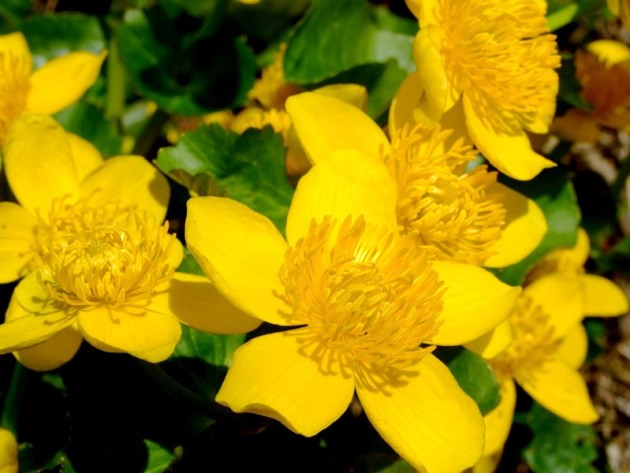
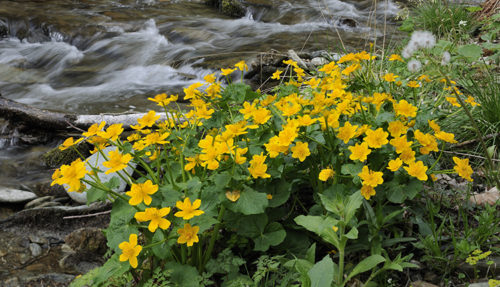
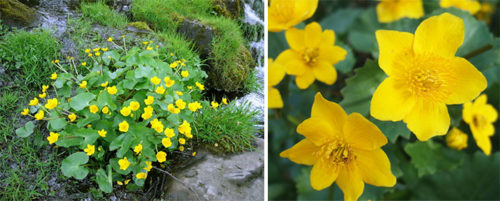
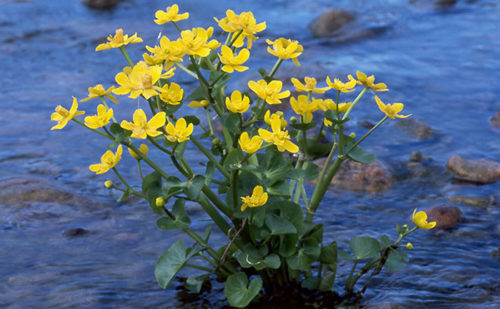
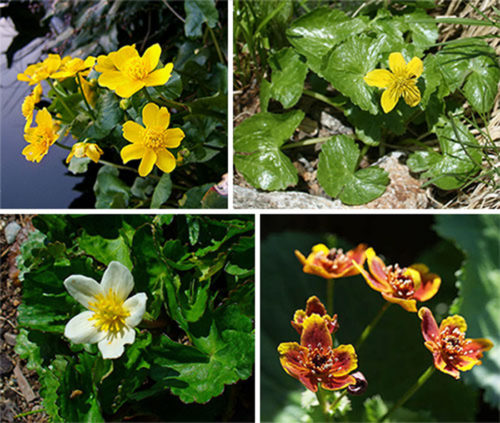




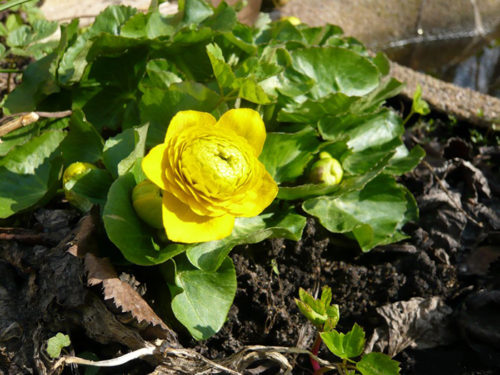
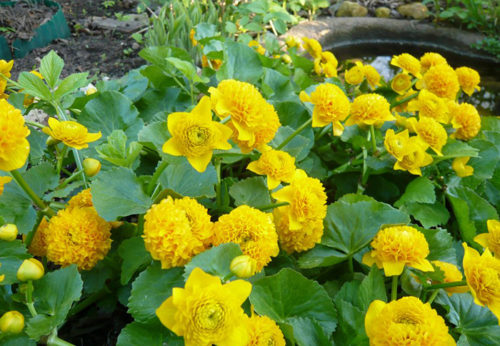
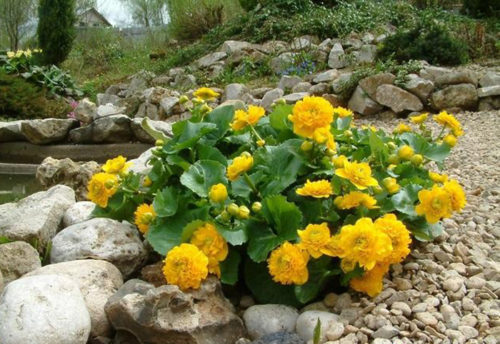
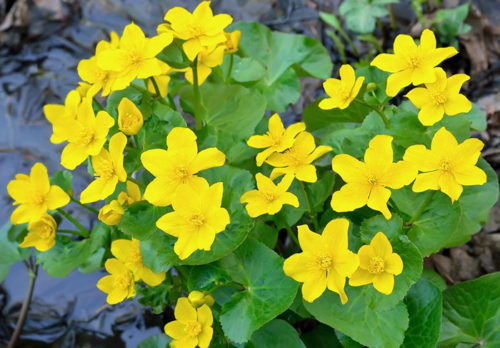
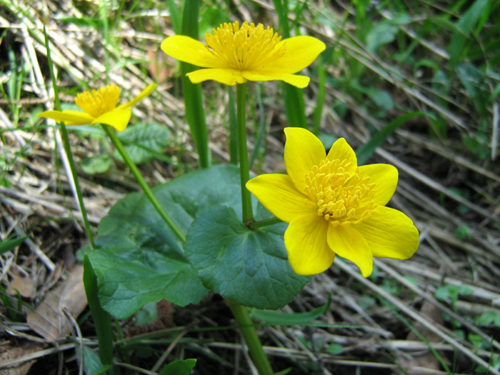
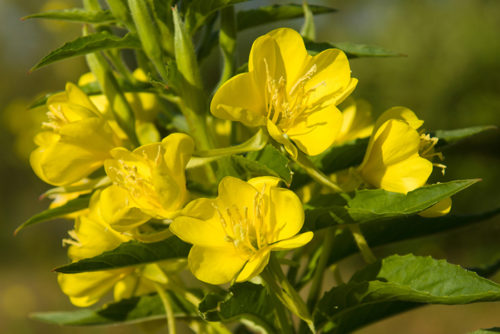
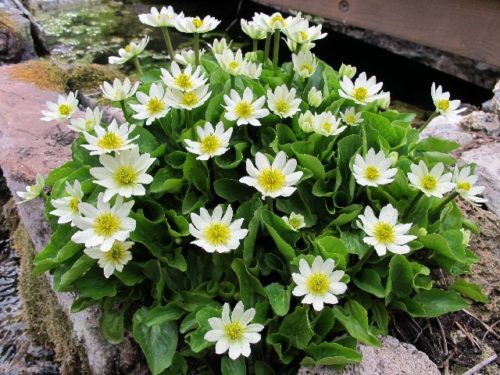
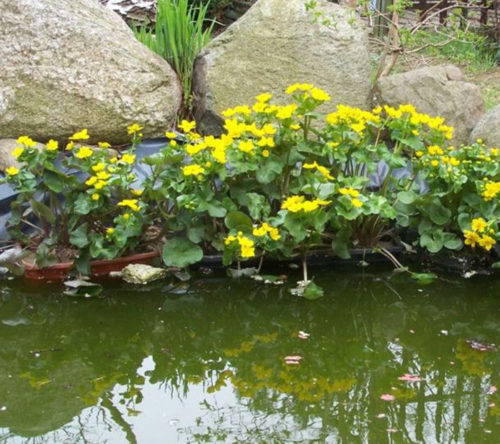
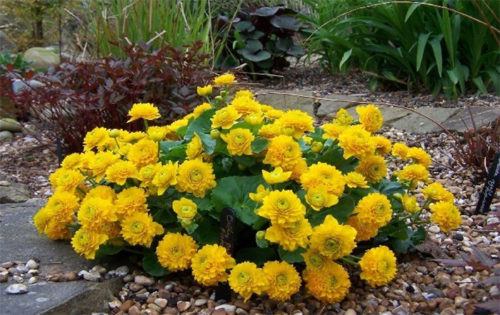












 Start a discussion ...
Start a discussion ...